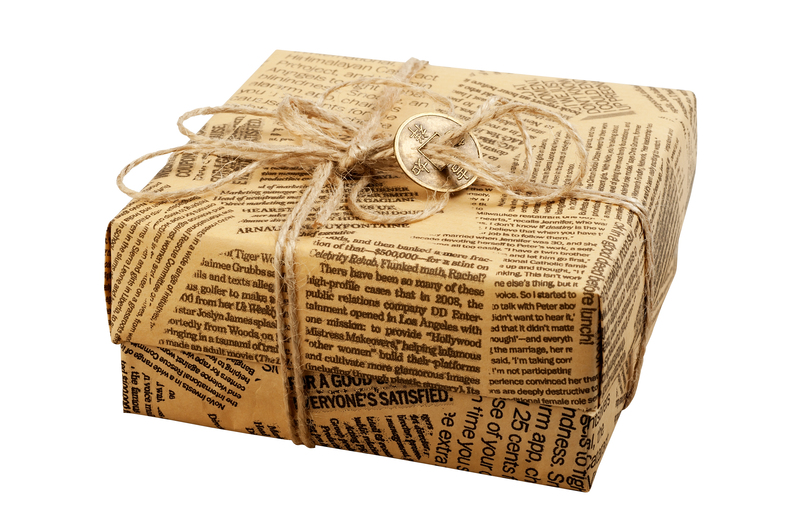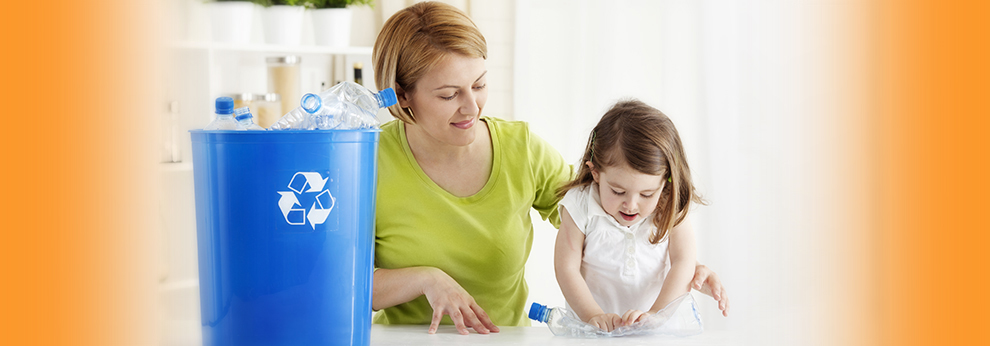Advancing Your Office Recycling Program
Posted on 30/09/2025
Advancing Your Office Recycling Program: Strategies for Sustainable Workplaces
Every business has a unique opportunity to make a positive environmental impact by improving and advancing its office recycling program. As corporate sustainability gains importance, taking your company's recycling efforts to the next level is not just a trend--it's a necessity. In this comprehensive guide, we'll explore actionable steps, innovative ideas, and best practices to advance your workplace recycling program and build a greener office for today and tomorrow.
Why Advance Your Office Recycling Program?
There are several compelling reasons to expand and improve your existing business recycling strategy:
- Environmental Responsibility: Offices generate significant amounts of waste, much of which can be diverted from landfills by implementing a robust recycling system.
- Cost Savings: Proper recycling often reduces waste disposal expenses, as recycled materials can offset trash pickups and landfill fees.
- Enhanced Workplace Morale: Employees feel good working for organizations committed to sustainability, boosting job satisfaction and engagement.
- Strengthened Brand Image: Companies with reputable office recycling initiatives stand out to customers, clients, and partners.
- Regulatory Compliance: Many localities now require specific recycling and waste diversion practices. Advancing your program helps you stay ahead of legal mandates.

Assessing Your Current Office Recycling Program
Start With a Waste Audit
To successfully improve and advance your office recycling program, begin by conducting a waste audit. This step will answer critical questions:
- What types of waste does your office produce most?
- Are recyclables being properly sorted and collected?
- Where are the biggest contamination and landfill diversion gaps?
Engage facility managers and janitorial staff to collect data on the kinds, quantities, and sources of waste. By identifying the key pain points, you can target your efforts for optimal results.
Setting Clear and Achievable Goals
Define Success for Your Program
Establish measurable objectives that guide your program's advancement and help track progress. For example:
- Increase recycling rates by 25% within one year.
- Reduce landfill-bound waste by half over two years.
- Achieve 100% participation in recycling initiatives across all departments.
Use regular data tracking and reporting to celebrate milestones and identify areas for continued improvement.
Expanding What You Recycle: Beyond the Basics
The Usual Suspects
Most offices already recycle basic materials:
- Paper
- Cardboard
- Plastic bottles and containers
- Aluminum cans
- Glass
While these are staples of any office recycling program, advancing your system means looking further.
What Else Can Your Office Recycle?
- E-Waste: Computers, monitors, keyboards, and mobile devices--all contain materials that should be recycled properly.
- Printer Cartridges: Many manufacturers offer free take-back programs for used cartridges.
- Batteries: Designate battery collection points for employees to safely dispose of spent batteries.
- Office Furniture: Reuse or recycle desks, chairs, and shelving through local specialized recyclers or donation centers.
- Food Waste: Consider on-site composting for kitchens and breakrooms, transforming organic waste into valuable soil amendment.
Work with your waste service provider or local government recycling office to identify additional streams that are feasible for your office to divert.
Effective Infrastructure: Bins, Signage, and Locations
Invest in the Right Recycling Bins
Success often hinges on convenient, clearly labeled bins for all recyclable materials.
- Use color-coded containers for landfill waste, recyclables, and compostables.
- Place bins in high-traffic areas--break rooms, kitchens, copier rooms, and reception areas.
- Ensure bins are always paired: wherever there's a trash can, there should be a recycling and (where possible) a composting option.
Provide Clear Signage
Ambiguous instructions often lead to contamination. Invest in large, graphic labels with lists and images of what belongs in each bin. Consider translating signs into multiple languages if your team is diverse.
Employee Engagement and Education
Training and Awareness Campaigns
Empowering your staff is crucial to achieve widely adopted office recycling practices. Use a variety of methods to educate and inspire:
- Kickoff Events: Launch recycling initiatives with workshops and presentations.
- Regular Training: Incorporate recycling guidelines into onboarding, and provide refresher sessions annually.
- Email Updates: Share program updates, tips, and success stories in regular internal communications.
- Visual Reminders: Posters, flyers, and digital signage in communal spaces reinforce recycling behaviors.
Gamification and Incentives
Add excitement and friendly competition to your office recycling program:
- Host recycling challenges between departments, with prizes such as gift cards, team lunches, or charitable donations for the winners.
- Recognize outstanding recyclers at meetings or in company newsletters.
- Publicize environmental impact--such as how many trees were saved or pounds of waste diverted--to underscore the program's success.
Utilizing Technology to Advance Office Recycling
Smart Solutions for a Green Workplace
- QR Codes & Apps: Place QR codes on bins that link to sorting guides or videos explaining proper disposal.
- Online Dashboards: Use software to track recycling metrics and communicate results company-wide.
- Automated Reminders: Send gentle nudges or fun facts via email or workplace messaging platforms to keep recycling top-of-mind.
Vendor Partnerships and Collaboration
Work With Your Waste Hauler
Your current waste management provider is a key partner in advancing your office recycling program. Schedule meetings to discuss:
- Collection schedules and capacity needs
- Additional recycling streams that may be available
- Feedback on contamination levels and advice on adjustments
Ask about employee training resources, lunch-and-learns, or tours of recycling facilities to deepen your team's understanding.
Engage Local Community Resources
Collaborate with local nonprofit organizations or municipal agencies for additional support. Many offer free resources, workshops, or special collection events for items like electronics, hazardous materials, or textiles.
Measuring and Reporting Progress
Track Key Metrics
To ensure ongoing success and buy-in from leadership, regularly track and communicate these metrics:
- Weight and volume of recyclables collected
- Reduction in landfill-bound waste
- Employee participation rates
- Cost savings from waste diversion
Use infographics or short reports to keep the entire organization informed and engaged.
Overcoming Common Challenges
Contamination in Recycling Streams
Contamination occurs when non-recyclable materials end up in recycling bins, risking the rejection of entire loads. Combat this with ongoing education, signage, and easily accessible sorting guidelines.
Employee Apathy or Confusion
Make recycling easy, convenient, and visible. Regularly refresh training and highlight new improvements so the program never becomes background noise.
Space Constraints
For offices with limited room, consider compact multi-stream bins or wall-mounted solutions to avoid clutter.
Innovative and Next-Level Initiatives
Zero Waste Goals
After mastering traditional recycling, challenge your office to move toward a zero waste strategy. This involves:
- Refuse: Say no to unnecessary packaging, promotional items, or disposable products.
- Reduce: Encourage double-sided printing, digital collaboration, and reusable dishware.
- Reuse: Set up an office "swap shop" for gently used items or implement a furniture/equipment library.
- Recycle: Continue diverting all possible items from the landfill stream.
- Compost: Establish an organic waste collection or partner with a local composter.
Pilot Green Purchasing Programs
Procurement can powerfully drive change. Choose suppliers who use recycled or recyclable packaging and prioritize environmentally friendly products. Purchase office supplies, breakroom items, and electronics with high post-consumer recycled content.

Building a Sustainable Culture
Leadership Involvement is Key
When managers and executives model recycling behaviors and publicly support sustainability goals, it encourages all staff to follow suit. Integrate advancing your office recycling program into your organization's core values and mission statement for maximum impact.
Collect and Implement Feedback
Invite ideas from staff through surveys or suggestion boxes. Employees on the ground often have invaluable tips for improving efficiency and adoption.
Conclusion: Taking the Next Step in Sustainable Office Practices
Advancing your office recycling program is a powerful way to contribute to environmental stewardship, cut costs, and create a workplace culture that attracts and retains top talent. By moving beyond the basics, investing in staff training, leveraging new technologies, and collaborating with vendors and community partners, you can transform your recycling efforts from good to exceptional.
Start by evaluating your current system, set ambitious but achievable goals, and empower every member of your office to participate. Continuous commitment and a willingness to innovate will ensure your sustainable office recycling program delivers benefits for years to come.
- Ready to advance your office recycling program? Begin your waste audit this week and involve your sustainability champions in planning next steps.
- Share your progress! Celebrate successes and make your results visible to inspire further participation and support.
Small changes lead to big impacts. Make your workplace a leader in environmental sustainability by advancing your office recycling program today.



